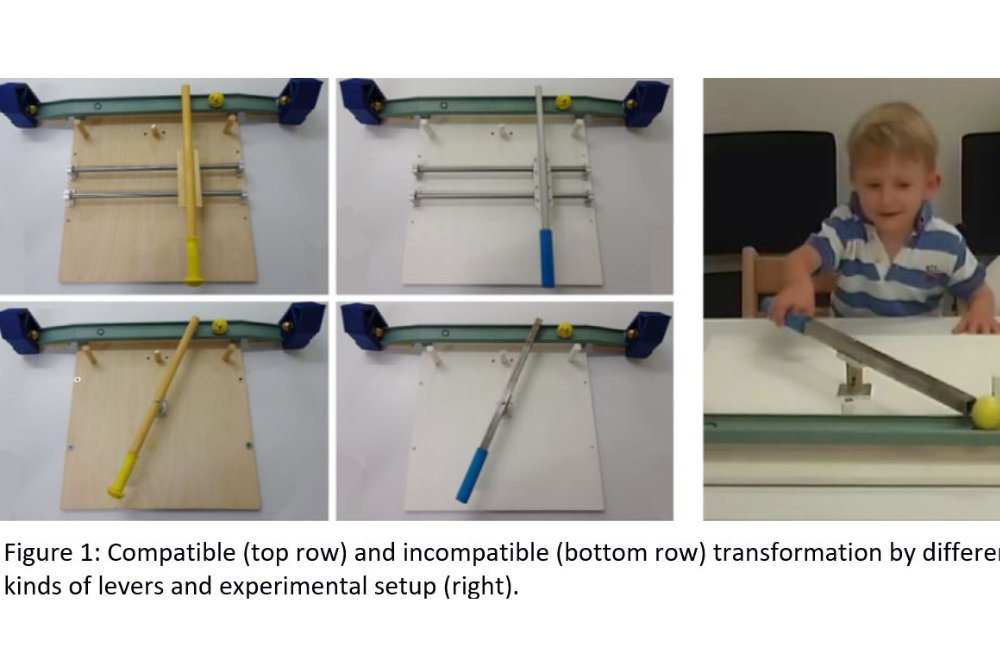Navigation auf uzh.ch
Navigation auf uzh.ch
In a recent study that was just published in Child Development, Dr. Miriam Beisert and Prof. Moritz Daum report findings from a study on young children’s tool use.

In a recent study that was just published in Child Development, Dr. Miriam Beisert and Prof. Moritz Daum report findings from a study on young children’s tool use. Tool use is a distinguished skill of human beings. Tools are used to achieve effects which are difficult or even impossible to achieve by human action alone and facilitate our daily life. Manual tool-use actions, on which the present work focused, can be regarded as their most basic form. In manual tool use, the tool is an object which transforms operating movements of the user’s hand into desired outcomes (effects) at the tool’s effective end. The respective transformation can either be compatible, which means that operating movements and resulting effect movements at the tool’s tip have the same spatial direction (e.g., when using tweezers) or incompatible (e.g., when using a clothespin).
In the current study, the authors invited 64 children at the age of 27– 30 months to the research unit at the University of Zurich (http://www.kleineweltentdecker.ch). The children first learned to operate a lever to move a ball toward a target (see Figure 1). Depending on the kind of lever, the transformation between operating movements at the lever’s handle and effect movements at the lever’s tip was either compatible (sliding lever) or incompatible (rotating lever). After this learning phase, the children learned to operate a second lever for which the type of transformation (compatible or incompatible) was either the same as during the learning phase or different.
The results showed that the children generally learned to operate a lever, both with a compatible or incompatible transformation between operating movements and resulting effects. Yet, children who operated the compatible lever learned faster and made less errors as compared to the incompatible lever. Furthermore, children learned the second lever faster when the transformation of their first lever stayed the same (as compared when it changed). Finally, learning the incompatible as compared to the compatible lever was more gradual with a longer phase of switching between correct and incorrect trials.
In sum, our approach toward tool-use learning in early childhood confirms two principles of adult skilled tool use: First, children learn the use of tools faster when the transformation is compatible as compared to incompatible (compatibility effect). Second, there are transfer effects of the transformation when switching between tools. It shows that a differentiated approach which considers the transformation between operating movements and resulting effects as a critical factor is necessary to describe young children’s tool-use learning. Tool-use learning can thus be sketched as the development from simple hand movements to tools that extend these hand movements to tools which transform the hand movement into something different.
Original publication:
Beisert, M., & Daum, M. M. (2020). Compatibility effects in young children’s tool use: Learning and transfer. Child Development, n/a(n/a). https://doi.org/10.1111/cdev.13455
